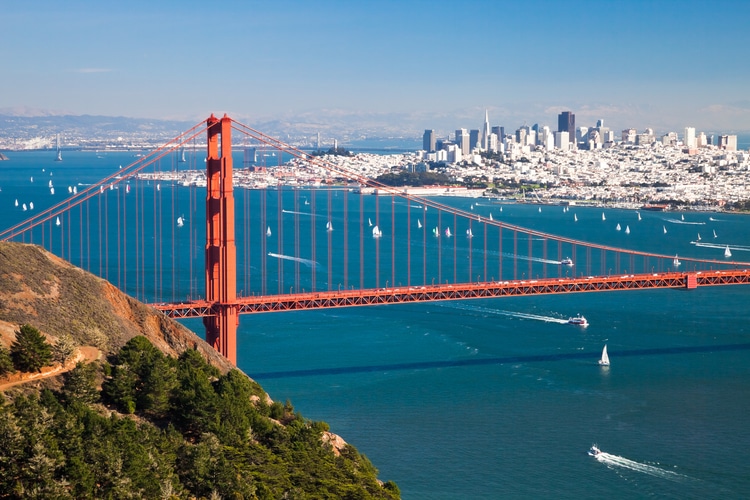Best Overnight Anchorages in San Francisco Bay
San Francisco Bay has a few well-protected overnight anchorages and many more less-protected anchorages that make wonderful lunch or cocktail stops in the right weather. Anchoring out is one of the best ways to enjoy the bay. Find out more about the best anchorages on San Francisco Bay for your boat.
Recently, options for traveling and recreation are slim with current health regulations. A lot of places impose strict health and safety protocols, health test results, and social distancing. Check to see the latest requirements before heading out.
Everyone dreams of just having a few days off to escape from the house-turned-office. A chance to stretch their backs and get tanned without having to answer calls from their boss. This is why anchoring out on your boat is the perfect. An opportunity for you to unwind and relax from your rigid everyday routine.
Anchoring is the perfect vacation for you to isolate, loosen up, and stay safe all at the same time. Lie on your boat to enjoy a one-of-a-kind view of the San Francisco Bay. All while letting the sparkling blue water rock your troubles away. At night, get your romance up while the moon and stars reflect on the bay. There is no time that you won’t enjoy anchoring on the bay.
Make sure you are ready for any changes that may happen and always be wary of any hazard that may come to your boat. Unfortunately, occasional boat and ship wakes are inevitable in almost all of the anchorages, so don’t expect complete tranquility.
Table of Contents
Best Anchorages in San Francisco Bay
Aquatic Park
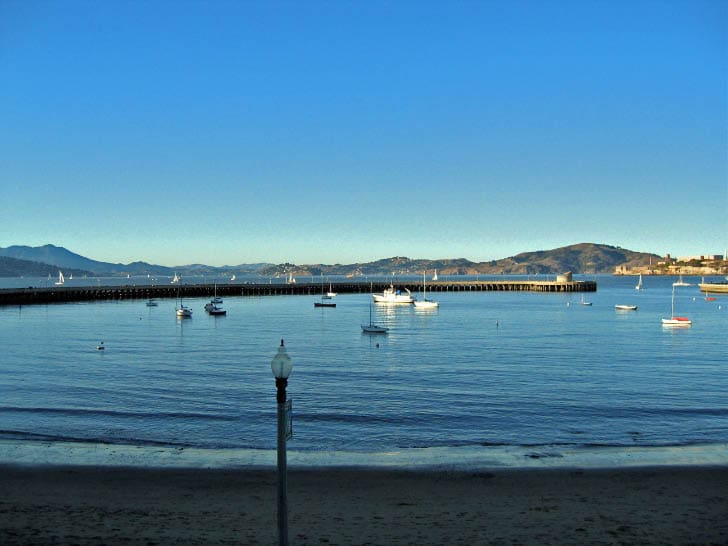
This is the only protected anchorage in San Francisco Bay. It is situated just north of the San Francisco waterfront. Right beside the historic museum on Hyde Street Pier in Aquatic Park. It’s a motorboat-free zone where you only use your motor to navigate your boat to anchor.
Many people love the view of Ghirardelli Square from this area. The steep slope of Hyde Street Hill is quite a sight for the eyes. You can also see historic ships from here. But always be wary when anchoring here as swimmers come to the cove around dawn.
To anchor here, you have to make a reservation with the National Park Service with a $10 charge. You also need a permit and will only be allowed to anchor for a maximum of five nights.
To book your overnight anchorage at Aquatic Park Cove, click here.
Berkeley’s South Cove
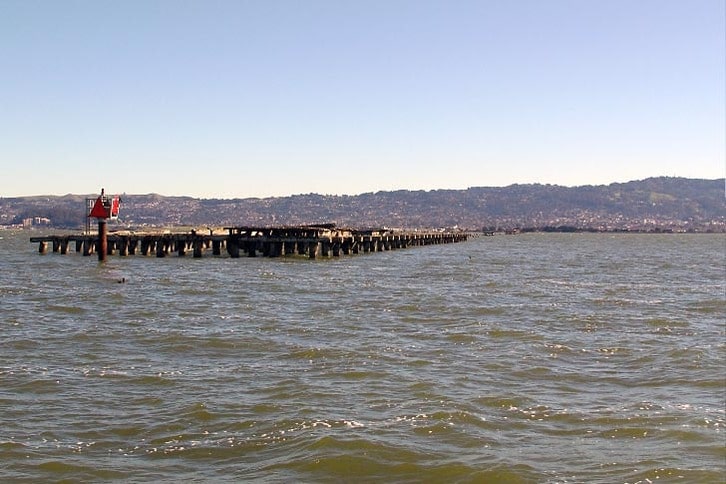
Explored most of the anchorages in the area? Then you might want to consider anchoring at Berkeley’s South Cove. There’s no current and a good holding bottom. A lot of dinghies and windsurfers hang out around here. From here, you may be able to see the wreckage of the Berkeley Pier that stretches out into the Bay.
The cove becomes a little shallow during low tide. Especially at the northern shoreline. If you anchor in close enough, you’ll be able to avoid the strong Westerly Bay winds. You should also watch out for the sandbar at the entrance of the cove. It is in the middle of the Berkeley and Emeryville marinas, called Ashby Shoal. It’s a cause for trouble during extreme low tides.
Clipper Cove
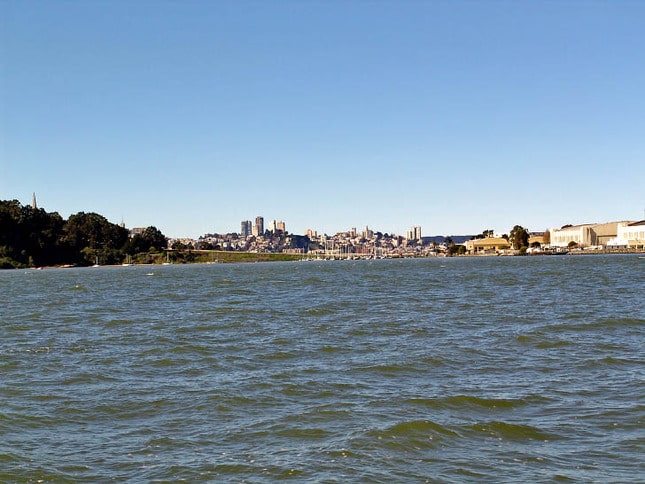
Located along the North Side of Yerba Buena Island and directly below the Bay Bridge is Clipper Cove. Interestingly, it was first built as a landing site for seaborne airplanes. It was supposed to be developed into an airport. Yet, with the onset of World War II, Treasure Island was converted by the Navy into a base. The plans for the airport were eventually scrapped. The Treasure Island Yacht Club now is using what used to be military docks.
What’s fascinating about the cove is that the water is strangely calm. Despite constantly being blown by westerly winds. Also, remember to be careful of the northern side of the entry to Clipper Cove because of a shoal across that area.
No permit is required to anchor at Clipper Cove. If you are planning to anchor for more than a night, you may need to secure a permit. A short term permit applies (if you plan on staying for up to four days) or long-term permit (more than four days’ stay). Although there are no fees for the permit. You would need to wait for your permit to expire after 21 days before getting another one.
For more information and to apply for a permit, click here.
China Basin
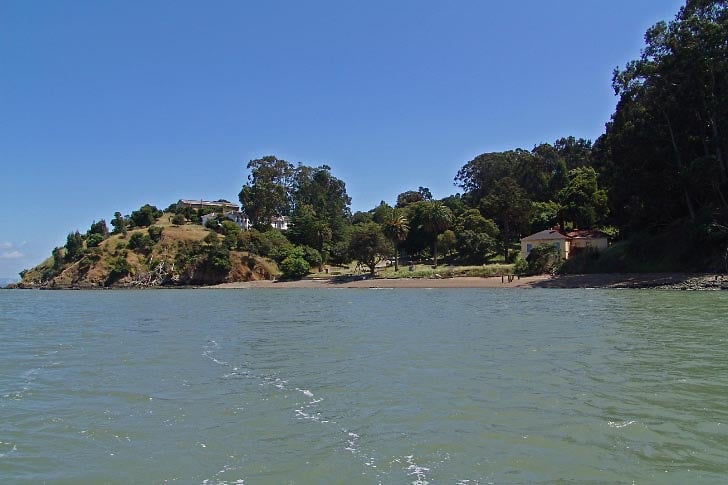
Right next to the San Francisco Giants’ Oracle Stadium is China Basin, also known as McCovey Cove. The area is typically free from currents and the depth is just right for you to get a secure anchor. China Basin is a nice spot to drop the hook because you have convenient access to the South Bay. From Redwood City, you can easily sail back and forth, or even sail around Alcatraz.
Many people come to the cove on the Giants’ game days. But in the off-season, there’s a big chance that only a few boats will anchor here. But if you want to experience the cove during game days, expect a lot of kayakers and even tailgaters on boats. Try not to anchor too close to Lefty O’ Doul Bridge because there is a lot of traffic going past it and it can get quite noisy.
Paradise Cove

Located in Marin County, you can find Paradise Cove. It is beside El Campo and Paradise Beach County Park. It offers great fishing spots and many kayakers come to explore the bay. It is a public fishing pier, so you wouldn’t have any trouble securing permits.
The waters in this area are kind of shallow, but a lot of boaters visit the place. During the fall when fishing enthusiasts try their luck with salmon. Depending on the season, there can be starry flounder, kingfish, sea bass, and California halibut. The sea bottom is mud, a little bit of grass, and some growth of mussels or barnacles.
Richardson Bay
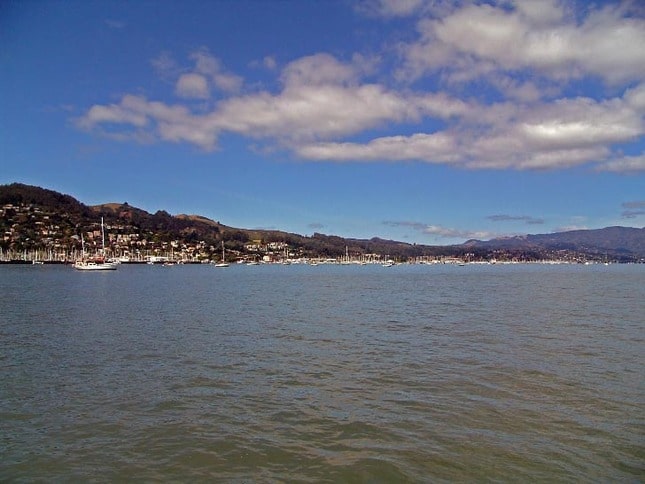
The Richardson Bay Marina can be found at the Sausalito waterfront community. Only minutes away from the Golden Gate Bridge. It has an average depth of 20ft, which makes it a great anchorage for small sailing crafts.
During the winter, a big chunk of the park is closed down. This gives protection to the ecological system in Richardson Bay, especially for migratory birds. Be cautious around the south end of the Sausalito Marina. Here the waters on the San Francisco Bay side of the boundary can be turbulent.
Richardson Bay rules need your boat to be registered and a working sanitation device.
What to look when choosing an anchorage in San Francisco Bay
Winds
When anchoring in San Francisco Bay, make sure you watch out for the winds. During the spring, the strong winds produce stronger currents. There are a lot of warnings on long-period swells during this season. As well as during winter, they usually come down later in the season.
San Francisco Bay has an onshore flow or sea breeze during the summer. This gradually decreases after the sun sets. Afternoon and evening winds range from 20 to 25 knots around the northern bay area. The strongest gusts coming from a path from the Golden Gate Bridge. The wind diminishes as it reaches Central Valley. Most days, winds can fall to 10 knots but may vary due to surface heating.
In the fall, San Francisco Bay is at its calmest from September to November. Light winds may start around late summer when strong winds are almost non-existent. You may experience some strong easterly winds at Carquinez Strait. As you are approaching the northern part of San Francisco Bay. While in the winter, storm tracking becomes active especially beginning late November. It’s the season that has the most activity in the sea, both with waves and ocean swells. Water conditions vary during winter, so it would be best to do a lot of research on the area you are planning to anchor.
Waves
Just like the wind, waves can behave erratically. Depending on the weather conditions, different spots in the bay can have varying wave heights. Of course, you don’t want to drop your anchor on a spot that’s going to make you roll around in your boat while you sleep.
There is still a lot to consider when looking out for waves aside from their height and direction. Water depth also affects where waves tend to go. Although waves in the open sea move in the same direction, they have a tendency to change direction upon encountering the bay water. These waves can be a bit uncomfortable if you intend to stay for the night on anchor.
Boat traffic
Two main considerations you should always consider are wind and waves. However, you might also want to look at boat traffic in the bay area. A lot of people head to the bay to relax and some spots might be more known to others. Meanwhile, some popular spots are on the way to favorite coves and anchorage areas. If you prefer a quiet time with your boat then consider anchoring at areas that aren’t as popular.
The main anchorages in San Francisco Bay
Ayala Cove
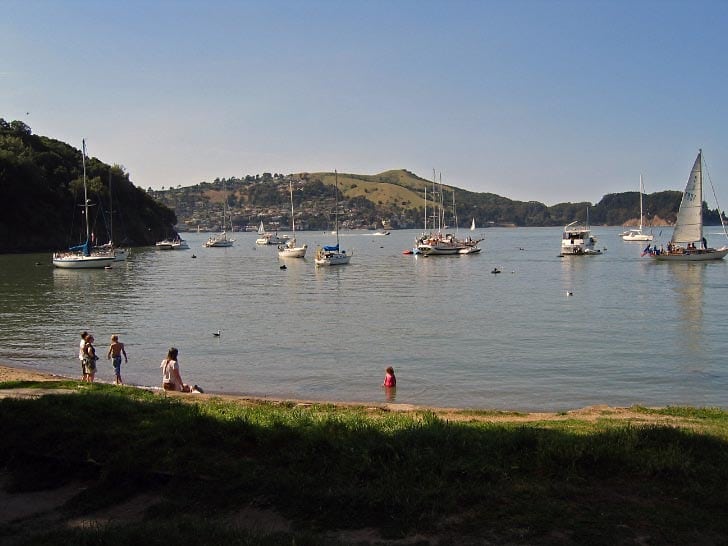
Ayala Cove has the biggest public docks and moorings within the bay area. It is also the most protected anchorage. The docks are usable from 8 am to sunset for $15. Staying on moorings for the night is allowed, but that costs $30.
For more information and to book a mooring, click here.
Boaters may be able to access Angel Island from Ayala Cove with their dinghy until ten in the evening. There is also a “self-pay” station so you wouldn’t have to wait for a park ranger to assist you with the fees. Kayakers also explore around this area so keep an eye out for them to avoid accidents.
Many amenities are available here at Ayala Cove. Visitors and even boaters can enjoy the kiosks and tours.
Richardson Bay
Richardson Bay, between Sausalito and Belvedere, is the anchorage closest to the Golden Gate. It has space for hundreds of boats. While not fully protected from wakes and chop, in most weather it is quite comfortable.

Richardson Bay has a big area for anchorage where hundreds of boats can fit into. It serves as a sanctuary for wildlife, especially for waterbirds and herrings. This anchorage’s deepest part is at its southeast end, near Spinnaker Point, beside marker 4.
Some people have permanently anchored out at Richardson Bay Anchorage as liveaboards. While some of the anchored boats have already been abandoned.
Clipper Cove
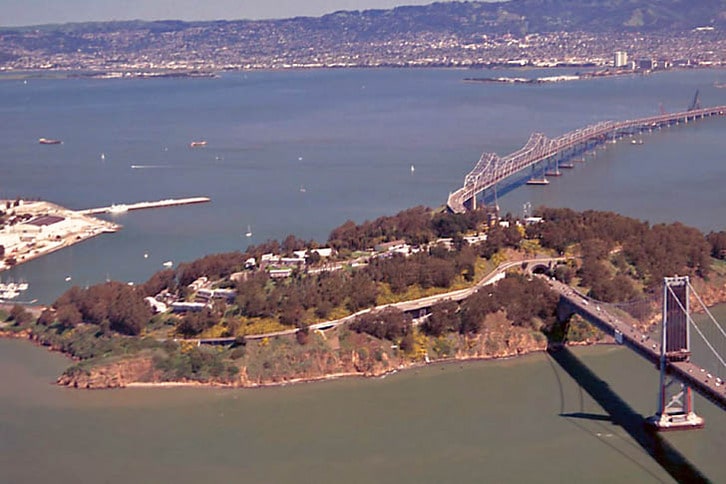
Another main anchorage on San Francisco Bay is Clipper Cove. It is located right in the middle of Yerba Buena Island and Treasure Island. Many boaters love anchoring in this area as it is well protected and is at a central location. Only a few ships pass by its open area at the east.
Note: A Comment from July 2021 regarding entry to Clipper Cove
“We just tried to get into Clipper Cove an hour before mean low tide where we should have had plenty of depth to enter the cove. We followed our chart and some good local directions and still ran aground and were stuck for 3 hours. The 3-4 foot shoal goes across the entire entrance and the cove should not be entered at anything close to low tide.”
Favorite anchorages in San Francisco Bay
Paradise Cove
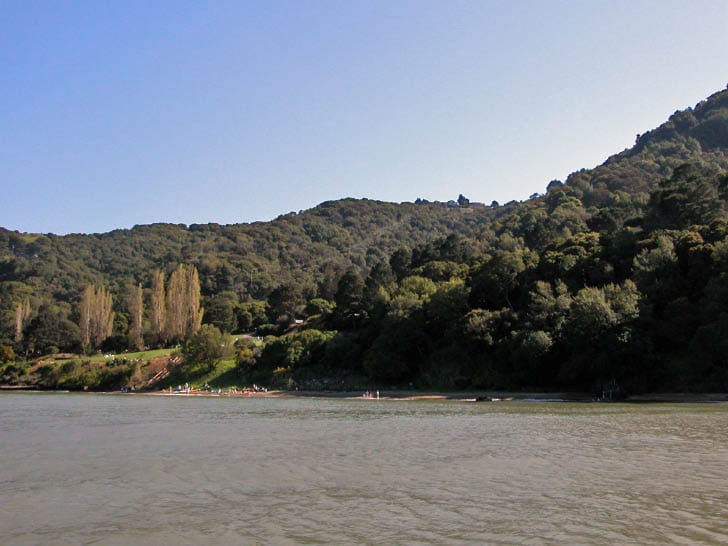
What was once a wooden pier built in the Second World War is now a stunning concrete T-shaped berth. This is still standing strong since it was renovated in the 1980s.
The water here is relatively shallow. Aside from being a great fishing spot, Paradise Cove has a beautiful long stretch of beach. This is easily reached from your boat via a dinghy. Concrete slabs that serve as a protective barrier attract perch during springtime.
You don’t need to get any permit to stay here at Paradise Cove, and you can even visit the beach at any time.
China Cove

Around the corner from Ayala Cove, right by the foot of Fernleaf Avenue is China Cove. This is also known as Willow Cove. It serves as a great lunch stop for weekend boaters, but is often empty during the middle of the week.
The waters here are beautiful emerald green. You can get a majestic view of the cliffs and fine sand of the beach from your boat. One thing you should look out for is seals. The beach is sometimes closed off when seals stay there. Be wary to avoid getting into accidents with them.
Downtown Sausalito Anchorage
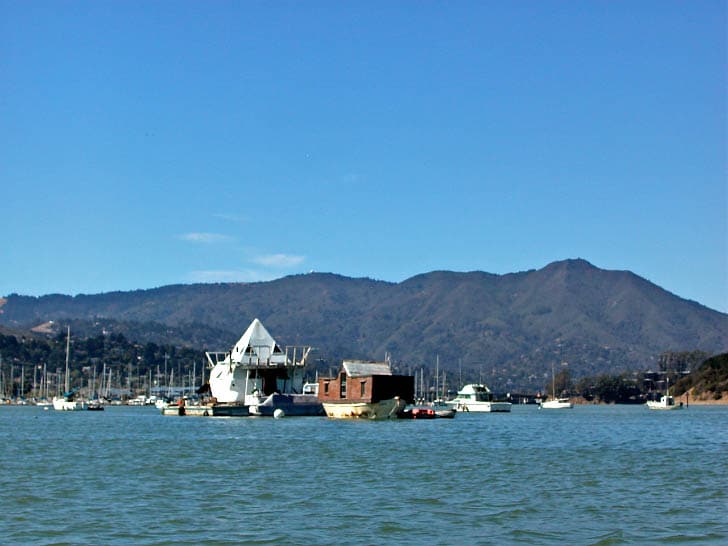
This anchorage can be found at the southern part of the ferry dock, near the rocky ridge where the Bridgeway is. Although overnight anchoring is not recommended because of the constant wakes. Downtown Sausalito Anchorage is a favorite lunch stop that has a great view of the San Francisco skyline. There is no charge for berthing here, but there is no available fuel nearby.
Quarry Beach
East of Angel Island State Park is Quarry Beach. People usually come to this anchorage at around 12:30pm. So if you want to find a spot that suits you, it would be better to come earlier when the conditions are good. It is also a favorite lunch stop among boaters and it is common for families to swim to shore and enjoy the sand.
The sea bottom is mud that provides a good holding for your anchor. Just keep an eye out for a steep drop just east of the anchorage.
Lunch Stops on San Francisco Bay
These anchorages are not as well protected as the ones listed above, but they still make great lunch stops. Many can be used overnight if the weather is calm and you can tolerate some wakes.
Belvedere Cove
Belvedere Cove is a small, lightly used anchorage area between Belvedere and Tiburon.
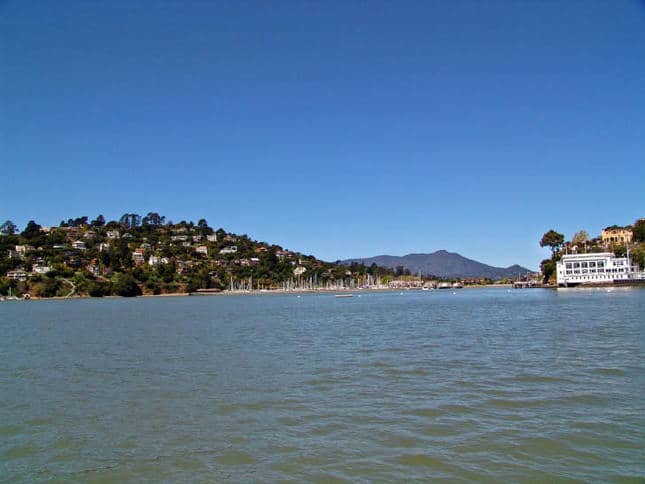
The bay on the south shore of Angel Island offers great views of San Francisco, but it is too unprotected for use in typical weather conditions.
If the weather is calm, it makes a beautiful lunch or sunset stop.
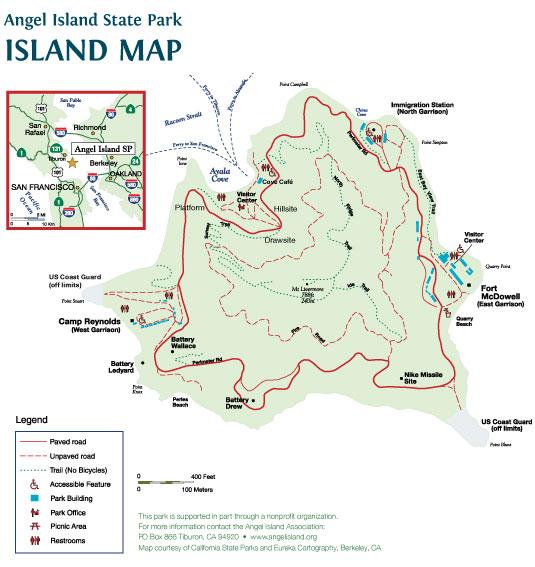
Central Basin
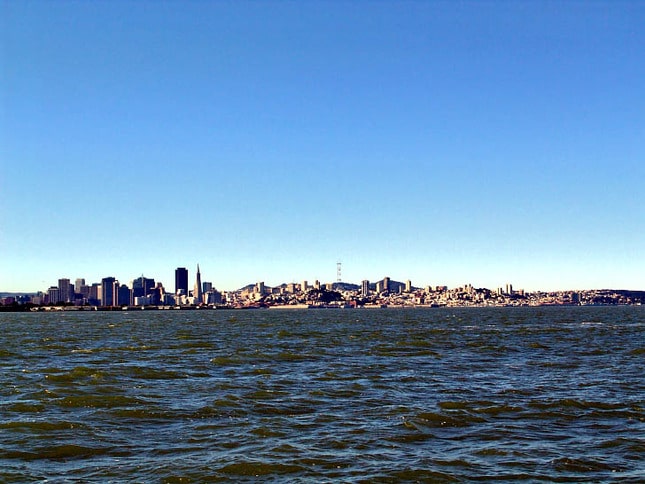
China Basin
East Garrison
Cove to the north of Quarry Point on the east side of Angel Island.
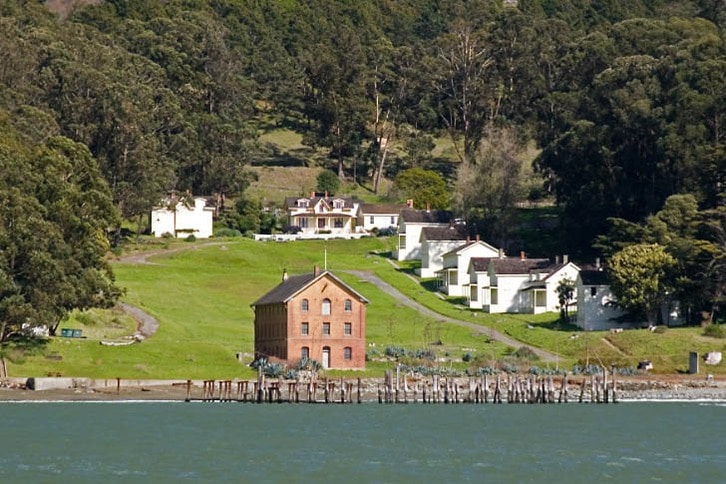
Horseshoe Cove
There is a small anchorage area inside Horseshoe Cove, which is home to the Presidio Yacht Club’s marina and the Coast Guard’s Station Golden Gate.
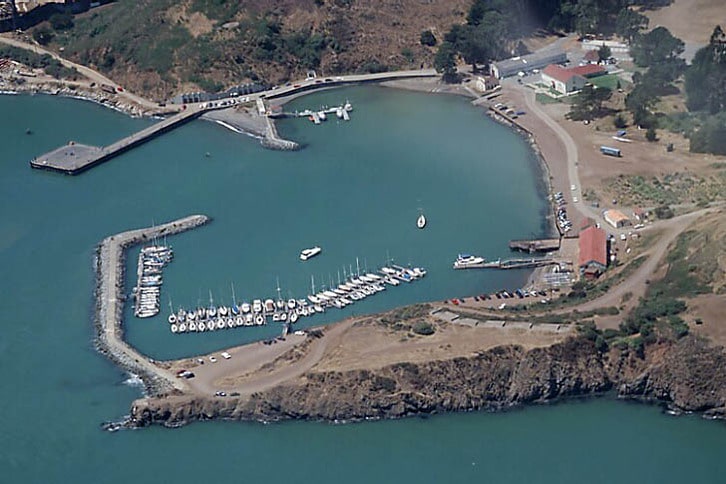
Point Stuart Anchorage
Just east of Point Stuart, this anchorage provides a good vantage point for watching the traffic through Raccoon Strait. Use only as a lunch stop.
Tips for anchoring overnight in San Francisco Bay
Anchoring during the day is a basic skill for any boat enthusiast. It is easy to observe surroundings, the water, and boat traffic. However, if you plan on staying for the night on the water, you should be well-prepared. There are many factors that are unexpected as compared to day-anchoring.
- Be extra observant of your surroundings and plan ahead.
Unlike daytime boating, it is not easy to see the conditions of the water at night. Don’t be complacent and be extra sensitive to any changes like the current, ebb and flow of the tide. Be alert for changing boating and wind conditions. Make sure you are ready for any changes that may happen and always be wary of any hazard that may come to your boat. Research and know the laws on overnight boating at the area where you plan to anchor
Areas like San Francisco Bay have laws that are enforced to protect wildlife habitat. Also for the safety of other boaters coming to visit the bay. Some areas also charge reservation fees while some are on a first-come-first-served basis. There may also be areas that are prohibited from boats at night. Make sure you do your research well so that you can enjoy your time at the bay without running into any trouble.Check the latest conditions
Check for the weather forecast, wave conditions, and tides so that you can plan a good anchorage. And anticipate what may happen while you are at anchor.
Current tides for San Francisco
San Francisco weather forecast for this week.
Final tips for a safe anchorage
- Stock your supplies
One of the most important things when preparing your boat for overnight anchoring is stocking your supplies. Bring a cooler and stock the most important things that you need. It’s always helpful to stock more than less.
The same goes for gear. Make sure that you have the appropriate anchor for your boat. If you’re not sure of what anchor to use, you can always do with an anchor one size larger than recommended. - Always keep your lights on
Leaving your lights on helps for you to better observe your surroundings and keep watch. Check in regularly with the conditions so you won’t be taken by surprise by any change in case of emergencies.
Conclusion
If you live around the Bay Area or just want to have a one-of-a-kind experience in San Francisco. Anchoring is a great way to de-stress or even get a great view of the city. San Francisco offers a lot of options with activities at the bay. Whether it be boating, kayaking, windsurfing, or just having a nice swim at a beach. Spending a night on the water with your boat is a fun and safe way to get that relaxation that you need.
Anchoring and boating do require a lot of responsibility. But this unique experience is worth all the preparation. Whether you are alone or enjoying the water with your friends, stay safe while anchoring out. Whether you are a novice boater or an expert sailor, it’s always helpful to read up on what to expect. Be prepared, so your time for relaxation can go on without a hitch.
